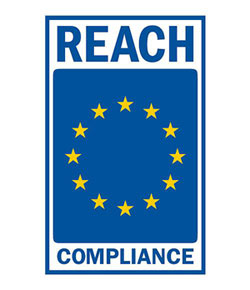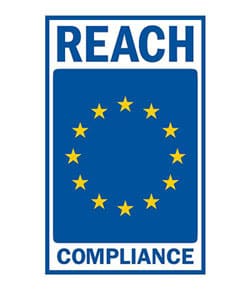By Veronica Marrero, Regulatory Compliance Specialist
 Annex II of the European Union (EU) Registration, Evaluation, Authorization, and Restriction of Chemicals (REACH) Regulation [Regulation (EC) No. 1907/2006] defines the requirements for the compilation of Safety Data Sheets (SDS). Recently, Commission Regulation (EU) 2020/878, which amends Annex II of the EU REACH Regulation, was published to apply from January 1, 2021. This amendment brings many changes to the requirements of the SDS format and data content. Although the application date of these changes is January 1, 2021, SDSs compiled in accordance with the amended regulation may continue to be provided until December 31, 2022. This includes SDSs newly-authored after January 1, 2021.
Annex II of the European Union (EU) Registration, Evaluation, Authorization, and Restriction of Chemicals (REACH) Regulation [Regulation (EC) No. 1907/2006] defines the requirements for the compilation of Safety Data Sheets (SDS). Recently, Commission Regulation (EU) 2020/878, which amends Annex II of the EU REACH Regulation, was published to apply from January 1, 2021. This amendment brings many changes to the requirements of the SDS format and data content. Although the application date of these changes is January 1, 2021, SDSs compiled in accordance with the amended regulation may continue to be provided until December 31, 2022. This includes SDSs newly-authored after January 1, 2021.
Some of the major changes this update to Annex II brings are listed below by SDS section:
- Section 1.1: Now includes a space to add a UFI number, where applicable as required according to Annex VIII of the Classification, Labelling and Packaging (CLP) Regulation [Regulation (EC) No. 1272/2008].
- Section 2.3: New requirements to provide information on substances that: are Persistent, Bioaccumulative and Toxic (PBT); are Very Persistent and very Bioaccumulative (vPvB); are included on the REACH Candidate List of Substances of Very High Concern (SVHC) for having endocrine disrupting properties, and that meet the criteria for having endocrine disruptive properties in accordance with either Commission Delegated Regulation (EU) 2017/2100 or Commission Delegated Regulation (EU) 2018/605. Where the SDS is for a mixture, this information is required for such substances present at > 0.1% by weight.
- Section 3: Requires additional information to be provided, where applicable, for substances including Specific Concentration Limit, M-factor, Acute Toxicity Estimate, Particle Characteristics.
- Section 3.2: Update to the concentration limits for when a substance in a mixture must be listed on the SDS.
- When a mixture is classified as hazardous in accordance with the CLP Regulation:
- Respiratory sensitization, Category 1 or Category 1B: > 0.1%
- Respiratory sensitization, Category 1A: > 0.01 %
- Skin sensitization, Category 1 or Category 1B: > 0.1%
- Skin sensitization, Category 1A: > 0.01 %
- Specific target organ toxicity (STOT) – single exposure, Category 3: > 1%
- Aspiration toxicity: > 1%
- When a mixture is not classified as hazardous in accordance with the CLP regulation:
- Skin sensitization, Category 1 or 1B; Respiratory sensitization, Category 1 or 1B; Carcinogenicity, Category 2: > 0.1%
- Skin sensitization, Category 1A; Respiratory sensitization, Category 1A: > 0.01%
- Reproductive toxicity, Category 1A, 1B or 2, or with effects on or via lactation: > 0.1 %
- Greater than or equal to 1/10 of the specific concentration limit for skin or respiratory sensitizers that have one.
- When a mixture is classified as hazardous in accordance with the CLP Regulation:
- Section 9.1: The properties required to be listed here have been updated, removing some and adding some new ones:
- Properties being removed: Appearance, Evaporation Rate, Odor Threshold, Viscosity, Vapor Density, Explosive Properties, Oxidizing Properties
- Properties being added: Physical State, Color, Particle Characteristics, Relative Vapor Density
- Section 9.2: Additional properties are also now required. This subsection is now further divided into Section 9.2.1 which must indicate information regarding physical hazard classes and Section 9.2.2 which must indicate other safety properties relevant to the product, including but not limited to:
- Mechanical sensitivity, Self-accelerating polymerization temperature, Formation of explosible dust/air mixtures, Acid/Alkaline reserve, Evaporation rate, Miscibility, Conductivity, Corrosiveness, Gas group, Redox potential, Radical formation potential, Photocatalytic properties.
- Section 11: Now has a new header, had a new subsection was added – Section 11.2 Information on other hazards – that is to describe adverse health effects caused by endocrine-disrupting properties for applicable substances.
- Section 12.6: Updated with a new header – Endocrine disrupting properties and is to describe adverse effects on the environment caused by endocrine-disrupting properties for applicable substances.
- Section 14.7: Updated with a new header – Maritime transport in bulk according to IMO instruments – and consequently an update to the data requirements, indicated separately for liquid, solid, and gas bulk cargoes.
- Section 15: Requires specific conditions for authorizations or restrictions to be indicated for listed substances.
Please contact the GSM Regulatory Team if you would like more guidance around the new requirements and the specific impact on your products.


